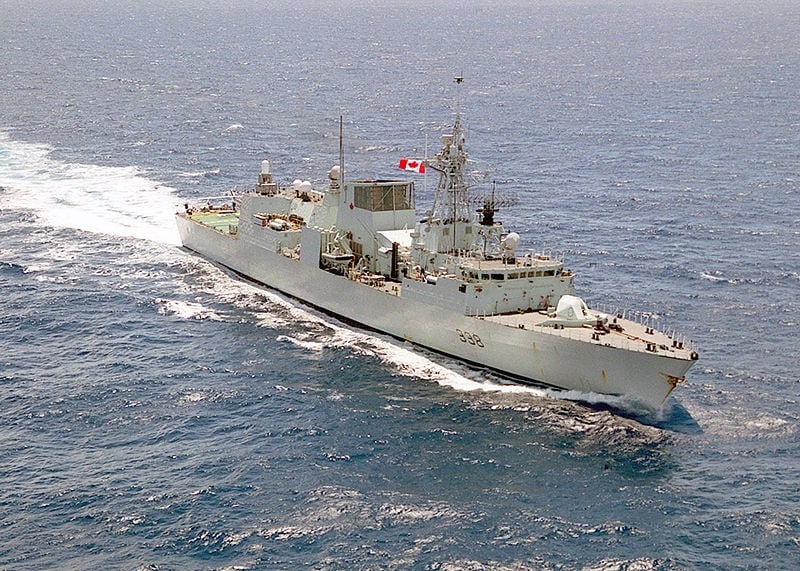The Canadian navy better have a back-up plan in case things go wrong on a mission that will see two frigates travel to Southeast Asia through the South China Sea, warns a professor of international relations concerned about escalating tensions in the region.
Michael Byers, a University of British Columbia political science professor specializing in international relations, said considering recent comments by U.S. officials and heightened tensions around the region, Canada needs a firm plan on how to react if the situation worsens.
The HMCS Winnipeg and HMCS Ottawa left for the region last week as part of the Indo-Asia-Pacific mission dubbed POSEIDON CUTLASS 17.
Much of the South China Sea is claimed by Beijing, but other nearby countries say China is overstepping its bounds and that its claims infringe on their sovereignty.
One of those countries, the Philippines, won a ruling last year from an international tribunal in The Hague over territory claimed by both countries. China, despite ratifying the agreement giving the tribunal authority 20 years ago, said it would not abide by the ruling.
Malaysia, Vietnam, Japan, Taiwan and others all have similar issues with Beijing.
Now the Canadian navy’s mission to Southeast Asia is taking the frigates through the sea. According to the mission’s briefing, that includes a stop in China.
The mission will also head to India, South Korea and the Philippines, among other places.
Byers said under normal circumstances, such a mission would be no big deal. But “we’re not in normal circumstances,” he said.
In the past, the U.S. has kept a presence in the area in part to keep China in check, but Beijing has been building artificial islands in a region it claims as its own.
Meanwhile, U.S. President Donald Trump’s Twitter rhetoric toward China has been inflammatory — such as accusing the country of currency manipulation. In January, his secretary of state implied that military force may be used against China in the region. In the past his chief strategist Steve Bannon has claimed a war with China is coming. All this has increased tensions in the region.
If the situation boils over and shots are fired, Canada could be forced to choose between backing up its number one ally, the U.S., or leaving the area, Byers said. This, he added, could suggest Canada is taking China’s side.
“In that hypothetical situation, the Canadian government has to make a very tough decision very quickly,” he said. “It’s not a decision you want to have to take, which is why I have concerns about the frigates going to the South China Sea at this particular moment.”
The Department of National Defence said it won’t divulge if it has a backup plan should things get out of hand in the region this summer due to security concerns.
But the commander of the Royal Canadian Navy, Vice-Admiral Ron Lloyd, told The Tyee it’s “very difficult to get to China if you don’t transit the South China Sea.” He said Canada’s ships will avoid contentious areas.
In Ottawa, Defence Minister Harjit Sajjan told The Tyee that Canada has no plans to go near contested areas in the South China Sea in the interest of diplomatic relations.
“Why would we want to take a route into a more contentious area? That’s not the aim,” Sajjan said. “The aim of this is for engagement with some of the partners that we work on and that’s the main focus.” ![]()















Tyee Commenting Guidelines
Comments that violate guidelines risk being deleted, and violations may result in a temporary or permanent user ban. Maintain the spirit of good conversation to stay in the discussion.
*Please note The Tyee is not a forum for spreading misinformation about COVID-19, denying its existence or minimizing its risk to public health.
Do:
Do not: